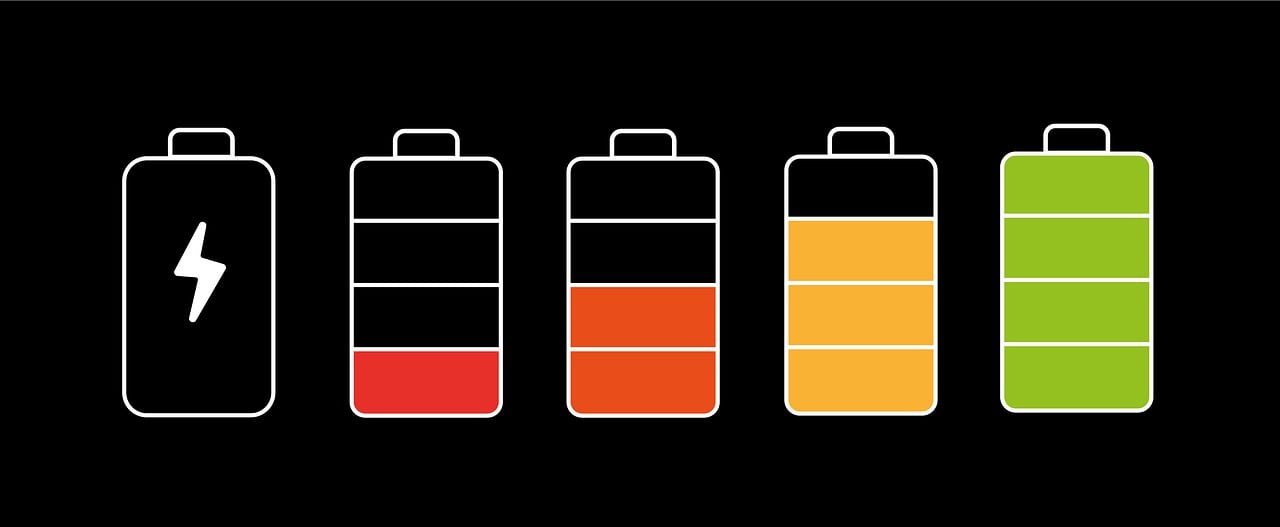variability. To ensure a stable and reliable power supply, grid operators are turning to advanced battery storage solutions. In this article, we explore the concepts of grid balancing and peak shaving and how battery storage is playing a pivotal role in optimizing energy usage.
The modern energy landscape is characterized by a delicate dance between power generation and consumption. Unlike traditional energy sources like coal or natural gas, renewable energy generation, such as wind and solar power, comes with inherent variability. The sun doesn’t shine at night, and the wind isn’t always blowing, leading to fluctuations in energy supply that can challenge grid stability. In the face of this variability, grid operators are turning to advanced battery storage solutions as a crucial tool to ensure a stable and reliable power supply.
Grid balancing is at the forefront of these efforts. It involves the real-time adjustment of electricity generation to match demand, effectively smoothing out the peaks and valleys in energy supply. Batteries, with their rapid response capabilities, are ideally suited to assist in grid balancing. When there is excess energy, such as during periods of high renewable energy production, batteries store the surplus power. Conversely, when demand outpaces supply, batteries release stored energy, effectively filling in the gaps and stabilizing the grid.
Peak shaving is another critical concept in grid optimization. It involves reducing the highest points of electricity consumption, which often occur during periods of peak demand. Battery storage systems play a pivotal role here as well. They can be charged during low-demand times when electricity is cheaper and then discharged during peak hours when electricity prices typically spike. This not only reduces costs for consumers but also eases the strain on the grid, preventing potential blackouts or brownouts during times of high demand.
The integration of battery storage into the energy grid represents a transformative shift in the way we manage and utilize electricity. It not only enhances grid stability and reliability but also promotes the efficient use of renewable energy resources. By acting as a buffer between generation and consumption, batteries enable us to maximize the benefits of clean energy sources while minimizing the challenges associated with their variability.
In conclusion, battery storage solutions are at the forefront of efforts to optimize our energy grid. They provide grid operators with the flexibility and responsiveness needed to tackle the variability of renewable energy sources effectively. Whether through grid balancing or peak shaving, batteries are playing a pivotal role in ensuring that our energy supply remains stable, reliable, and increasingly sustainable as we transition towards a cleaner, greener future.
Should you desire more in-depth information, it’s available for your perusal on this page: Renewable Energy in the Sustainable Development of Electrical …

Renewable energy sources are inherently variable, dependent on weather conditions and time of day. This variability can lead to imbalances between electricity supply and demand, potentially causing grid instability. Grid operators must find effective solutions to address these fluctuations.
nullFor additional details, consider exploring the related content available here Optimizing energy and cost in renewable grid systems: An …
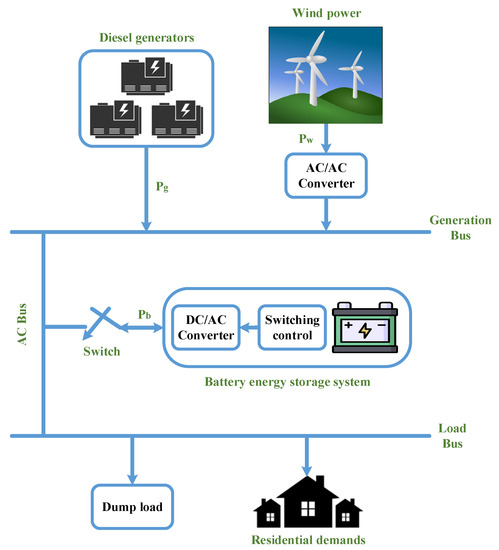
Battery storage systems offer a dynamic solution to grid balancing. They can absorb excess energy when supply surpasses demand and release stored energy when demand outstrips supply. This instantaneous response helps maintain grid frequency and voltage stability, ensuring uninterrupted power to homes and businesses.
Battery storage systems represent a transformative solution to one of the most pressing challenges in modern energy management – grid balancing. Their unique ability to absorb surplus energy during periods of excess supply and release stored energy precisely when demand surges is nothing short of revolutionary. This instantaneous response plays a pivotal role in maintaining grid frequency and voltage stability, ultimately ensuring the uninterrupted and reliable supply of power to homes and businesses alike.
The concept of grid balancing is akin to walking a tightrope, where even the slightest imbalance between electricity supply and demand can lead to voltage fluctuations, frequency deviations, and even blackouts. This delicate equilibrium becomes all the more challenging with the increasing integration of intermittent renewable energy sources, such as solar and wind power. Battery storage systems emerge as the saviors of this balancing act, offering unmatched agility and precision.
During periods of excess supply, which often occur when renewable sources are generating power at their peak, battery systems swing into action. They absorb the surplus electricity, preventing it from going to waste. This surplus energy charges the batteries, converting it into a form that can be stored and used later. This process not only prevents grid congestion but also maximizes the utilization of renewable energy resources, reducing curtailment and minimizing environmental impact.
Conversely, when demand outpaces supply, battery storage systems respond with remarkable speed. They discharge the stored energy back into the grid within milliseconds, supplementing the electricity supply precisely where it’s needed most. This rapid response prevents voltage drops and frequency deviations, ensuring that sensitive electronic equipment remains unaffected and that businesses and households continue to receive a stable power supply.
Beyond grid balancing, battery storage systems offer a host of additional benefits. They enhance the reliability of electricity supply, acting as a dependable backup during grid disruptions, extreme weather events, or emergencies. This feature is especially critical for critical infrastructure like hospitals, data centers, and emergency response facilities, where uninterrupted power is a matter of life and death.
Moreover, battery systems contribute to reducing greenhouse gas emissions by promoting the integration of renewable energy sources. They allow for greater flexibility in energy generation and consumption, enabling grid operators to transition away from fossil fuel-based backup generators and reduce their carbon footprint.
As technology advances and economies of scale come into play, battery storage systems are becoming more affordable and accessible than ever before. This accessibility means that the benefits of grid balancing and energy stability can be extended to a wider range of users, from individual homeowners with residential battery systems to large industrial facilities with massive grid-scale installations.
In conclusion, battery storage systems are not just a game-changer; they are a linchpin in the ongoing transformation of the energy landscape. Their dynamic response to grid balancing challenges helps maintain the stability and reliability of electricity supply, fostering a sustainable and resilient energy future for homes, businesses, and the environment alike.
To delve further into this matter, we encourage you to check out the additional resources provided here: Load Shifting: What Is It and How Does It Work?

Peak demand periods, often during hot summer afternoons or cold winter evenings, strain the grid and can lead to increased electricity costs. Battery storage enables peak shaving, a strategy where excess energy is stored during off-peak hours and discharged during peak periods. By reducing peak demand, battery systems help lower energy costs and reduce stress on the grid.
Peak demand periods pose significant challenges to energy grids, especially during extreme weather conditions like scorching summer afternoons and frigid winter evenings. These peak hours, characterized by heightened electricity consumption, not only strain the grid but also come with increased energy costs for consumers. Battery storage emerges as a vital tool in mitigating these challenges, and the concept of peak shaving offers a host of advantages:
1. Cost Savings for Consumers:
Peak shaving directly translates into cost savings for consumers. By storing excess energy during off-peak hours when electricity rates are lower and discharging it during peak times, households and businesses can reduce their energy bills substantially. This financial relief is particularly significant for energy-intensive industries and regions with high electricity prices.
2. Grid Infrastructure Optimization:
Reducing peak demand through battery-enabled peak shaving alleviates the pressure on grid infrastructure. This means that grid operators can avoid costly investments in expanding capacity to meet peak demand, ultimately lowering the long-term maintenance and infrastructure costs for both utilities and consumers.
3. Lowering Carbon Footprints:
Peak shaving not only reduces costs but also aligns with sustainability goals. By relying on stored energy during peak periods instead of firing up fossil fuel power plants, we can reduce greenhouse gas emissions. This shift towards cleaner energy sources contributes to a greener, more environmentally friendly grid.
4. Grid Reliability and Resilience:
Battery storage systems enhance grid reliability by providing a stable source of power during peak demand. This not only reduces the risk of blackouts but also enhances the overall resilience of the grid, making it more robust in the face of unexpected events like severe weather or equipment failures.
5. Promoting Energy Conservation:
The practice of peak shaving encourages consumers to be more energy-conscious. Knowing that electricity is more expensive during peak hours motivates individuals and businesses to adopt energy-saving measures, such as turning off non-essential appliances or implementing energy-efficient technologies. This shift in behavior fosters a culture of energy conservation.
6. Encouraging Distributed Energy Resources:
Peak shaving with battery storage supports the integration of distributed energy resources (DERs) like rooftop solar panels. Excess energy generated by these DERs can be stored in batteries and used during peak periods, further reducing reliance on traditional grid infrastructure and fossil fuels.
In conclusion, peak shaving with battery storage is a multifaceted strategy that yields benefits ranging from financial savings to environmental stewardship. By enabling consumers to optimize their energy usage and grid operators to manage peak demand more efficiently, battery storage systems are at the forefront of creating a more resilient, sustainable, and cost-effective energy future. As technology continues to advance, the potential for peak shaving to revolutionize energy consumption and grid operations becomes even more promising.
To expand your knowledge on this subject, make sure to read on at this location: Peak Shaving: Optimize Power Consumption with Battery Energy …
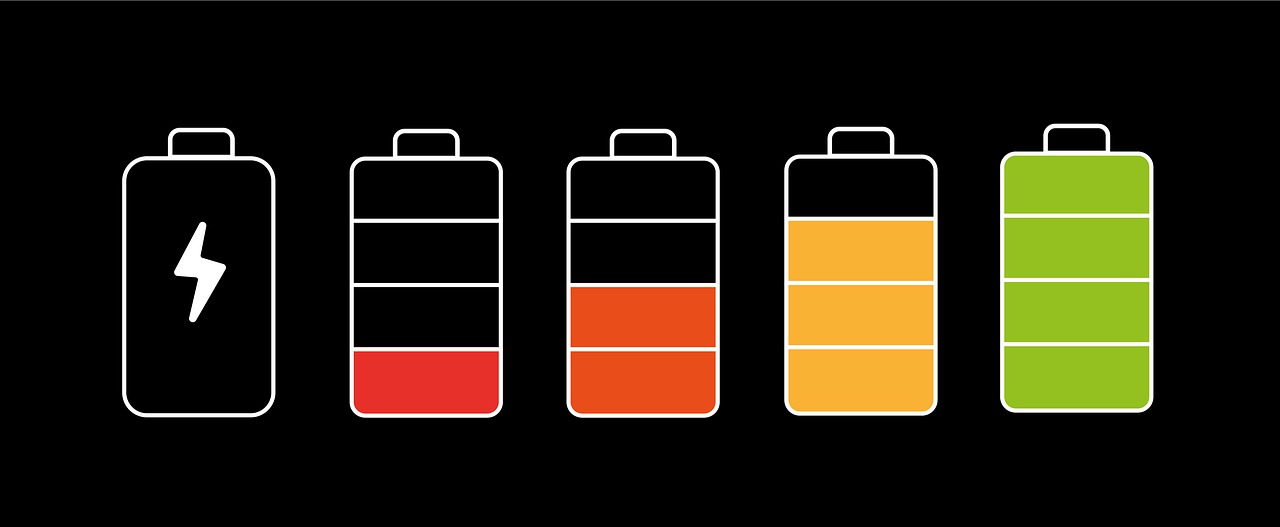
Battery storage systems act as a reliable backup during unexpected outages. In regions prone to extreme weather events or natural disasters, batteries can provide immediate power to critical facilities like hospitals, emergency response centers, and water treatment plants. This enhances overall grid resilience.
The role of battery storage systems as reliable backup solutions during unexpected outages cannot be overstated, especially in regions susceptible to extreme weather events or natural disasters. These batteries serve as a lifeline, providing immediate and uninterrupted power to critical facilities when they need it most. This not only ensures the continuity of essential services but also significantly bolsters the overall resilience of the grid and the communities it serves.
Extreme Weather Resilience: Batteries are instrumental in fortifying regions against the destructive impacts of extreme weather conditions, such as hurricanes, tornadoes, and winter storms. When the conventional power grid falters under the strain of severe weather, battery storage systems seamlessly kick in, supplying electricity to vital facilities. Hospitals remain fully operational, emergency response centers can coordinate relief efforts effectively, and water treatment plants continue to provide clean water to residents.
Natural Disaster Preparedness: In areas prone to earthquakes, wildfires, or flooding, battery storage systems become essential components of natural disaster preparedness. They provide a crucial source of backup power, enabling communities to respond swiftly and efficiently to emergencies. For example, during wildfires, batteries can power firefighting equipment and keep evacuation centers running smoothly.
Enhanced Grid Resilience: The widespread deployment of battery storage systems across the grid enhances its overall resilience. These systems can absorb excess energy during periods of low demand and release it during peak times or emergencies. This demand-side management contributes to grid stability, reducing the risk of cascading blackouts and minimizing the impact of localized disruptions.
Community Safety: Beyond their immediate role in sustaining critical infrastructure, battery storage systems enhance overall community safety. They ensure that essential facilities remain operational, enabling first responders to perform their duties effectively and residents to access vital services. This safety net can be a matter of life and death during a crisis.
Reducing Recovery Time: One of the key benefits of battery storage systems is their ability to reduce recovery time after an outage. Traditional backup generators may take time to start and synchronize with the grid, causing brief but impactful interruptions. Batteries, on the other hand, provide instant power, minimizing disruptions and accelerating the return to normalcy.
Environmental Benefits: Battery storage systems not only improve grid resilience but also offer environmental benefits. They enable the integration of renewable energy sources, such as solar and wind, which can further reduce greenhouse gas emissions. This dual role in sustainability and resilience aligns with the broader goal of combating climate change.
In conclusion, battery storage systems are the linchpins of grid resilience in regions prone to extreme weather events and natural disasters. Their ability to provide immediate and reliable backup power to critical facilities is a testament to their importance in safeguarding communities. As the world grapples with a changing climate and an increasing frequency of emergencies, these systems serve as a beacon of preparedness and resilience, ensuring that vital services and safety nets remain intact, even in the face of the most challenging circumstances.
To expand your knowledge on this subject, make sure to read on at this location: TROES on LinkedIn: #bess #energystorage #renewableenergy …

As the share of renewable energy sources in the grid grows, battery storage becomes increasingly vital. It allows excess energy generated during favorable conditions to be stored for use when renewable generation is low. This integration helps reduce the need for backup fossil fuel power plants and lowers carbon emissions.
nullFor a comprehensive look at this subject, we invite you to read more on this dedicated page: Overview of energy storage systems in distribution networks …
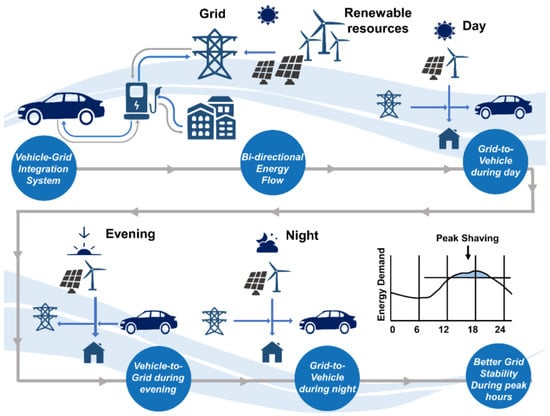
Beyond grid applications, battery storage benefits individual consumers. Homeowners and businesses can install battery systems to manage their energy usage more efficiently. By storing excess solar energy during the day and using it at night, they can reduce reliance on the grid and lower their electricity bills.
Battery storage transcends its role in grid applications, delivering tangible benefits directly to individual consumers, homeowners, and businesses alike. This technology empowers them to take control of their energy consumption and align it with their needs and priorities more efficiently than ever before.
For homeowners, battery systems offer a game-changing solution to harness the full potential of renewable energy, particularly solar power. During sunny days when solar panels generate more electricity than is immediately needed, excess energy can be stored in the batteries for later use. This stored energy becomes a valuable asset during the evening or cloudy periods when solar generation is low or nonexistent. Consequently, homeowners can significantly reduce their reliance on the grid during peak demand times, thereby saving money on electricity bills and promoting sustainability.
Beyond financial savings, battery systems provide homeowners with energy independence and security. They act as a safeguard against power outages, ensuring that essential appliances and lights continue to function even when the grid fails. This added peace of mind is especially crucial during extreme weather events or emergencies, where access to electricity can be a lifeline.
Businesses, too, stand to benefit immensely from battery storage. For commercial enterprises, managing energy costs is a top priority. Battery systems enable businesses to take charge of their electricity usage patterns, optimizing consumption during times when electricity rates are low and relying on stored energy when rates spike during peak hours. This strategy not only results in substantial cost savings but also enhances overall operational efficiency.
Battery technology also supports sustainability goals for businesses. By integrating renewable energy sources, such as solar or wind, with battery storage, companies can reduce their carbon footprint and contribute to a greener, more environmentally conscious future. This not only aligns with corporate social responsibility objectives but can also enhance a business’s reputation and marketability to environmentally conscious consumers.
Moreover, battery systems are adaptable and scalable, making them suitable for a wide range of applications, from residential use to industrial-scale installations. Their versatility ensures that they can cater to the unique energy needs of various consumers, whether it’s a small family home or a large manufacturing facility.
In conclusion, battery storage represents a paradigm shift in how individual consumers, homeowners, and businesses engage with energy. It empowers them to make informed choices, reduce reliance on the grid, lower electricity bills, and contribute to a more sustainable and resilient energy future. As the technology continues to evolve and become more accessible, it will play an increasingly vital role in shaping the way we interact with and consume energy.
Additionally, you can find further information on this topic by visiting this page: Collaborative Solutions for Balancing Power Demand in EV Charging
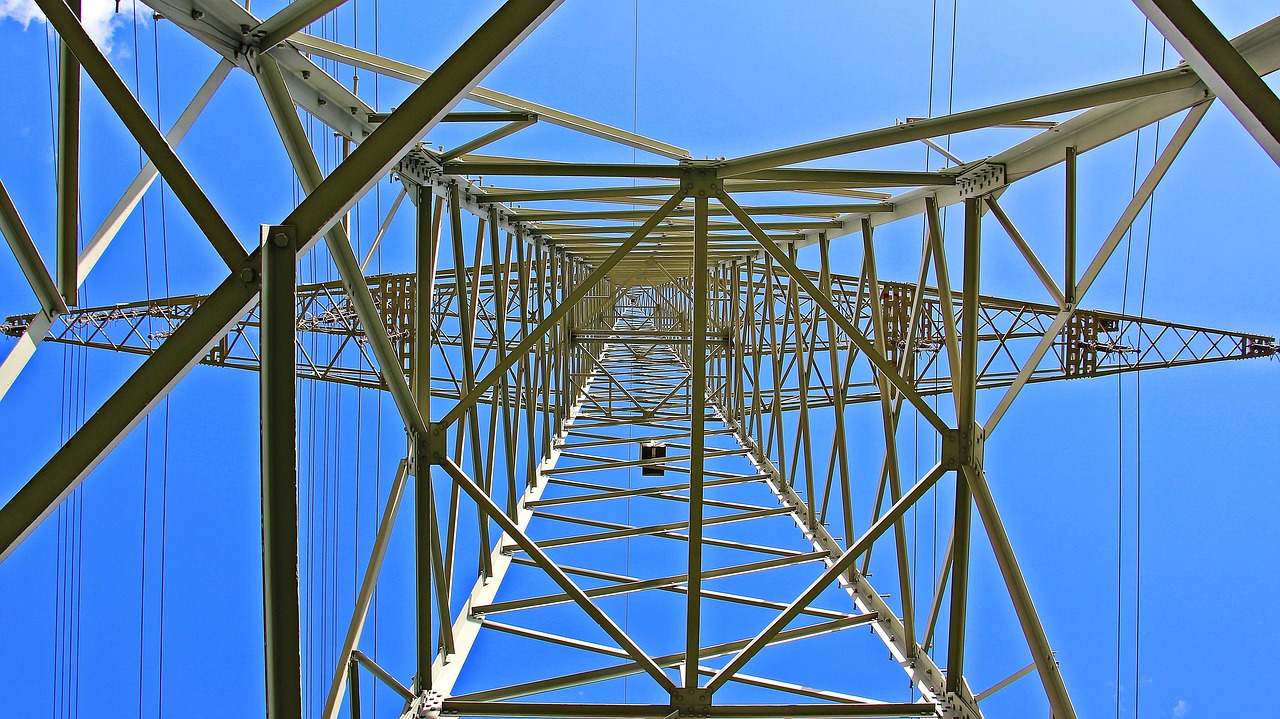
Battery storage contributes to a more sustainable energy future by promoting the use of clean, renewable energy sources. It allows for a smoother transition away from fossil fuels and towards a grid powered by environmentally friendly resources.
Battery storage is a linchpin in the pursuit of a sustainable energy future, and its significance reverberates across various aspects of our evolving energy landscape. Here’s an in-depth exploration of how battery storage plays a pivotal role in promoting the utilization of clean, renewable energy sources and facilitating a seamless transition away from fossil fuels toward a grid powered by environmentally friendly resources.
Unlocking Renewable Potential: Battery storage serves as a renewable energy enabler, allowing us to harness the full potential of intermittent energy sources such as wind and solar. By storing excess energy during periods of abundance and releasing it when demand surges or energy production wanes, batteries mitigate the intermittency challenges associated with renewables. This ensures a more reliable and consistent power supply, reducing the need for fossil fuel backup.
Grid Stability: The integration of battery storage enhances the stability and resilience of electrical grids. Batteries respond swiftly to fluctuations in supply and demand, helping to maintain grid frequency and voltage levels. In this role, they serve as grid guardians, ensuring that even in the face of disruptions or sudden changes, electricity flows smoothly, contributing to a reliable and secure energy ecosystem.
Reducing Carbon Emissions: By enabling a greater share of renewable energy in the grid, battery storage directly contributes to a substantial reduction in carbon emissions. As the electricity sector undergoes a transition toward cleaner energy sources, the carbon footprint of energy production decreases significantly. This aligns with global climate goals and underscores the urgent need to combat climate change.
Mitigating Energy Waste: Battery storage helps minimize energy waste by optimizing energy usage. It captures surplus electricity during low-demand periods and redistributes it when it’s needed most, reducing the need for peaker plants or inefficient energy generation methods. This not only saves energy but also reduces the environmental impact of energy production.
Supporting Decentralized Energy: Battery storage empowers decentralized energy systems, where individuals and communities can generate, store, and share their renewable energy. This democratization of energy production fosters energy independence and local resilience, promoting a more equitable and sustainable energy landscape.
Accelerating Technological Advancements: The increasing demand for battery storage has spurred innovation in energy storage technologies. Ongoing research and development efforts are driving advancements in battery efficiency, energy density, and cost-effectiveness. These improvements are making renewable energy and energy storage even more accessible and appealing.
Energy Access for All: Beyond promoting sustainability in developed regions, battery storage holds the promise of expanding energy access to underserved and remote communities worldwide. Off-grid and microgrid solutions, often powered by renewable energy sources and batteries, bring clean and reliable electricity to areas previously lacking access.
In essence, battery storage is the linchpin that connects renewable energy aspirations with practical, real-world solutions. It serves as the backbone of a cleaner, more resilient, and sustainable energy future. As battery technology continues to evolve and gain prominence, it reinforces our collective commitment to reducing carbon emissions, preserving the environment, and ensuring that the transition away from fossil fuels is not just a goal but a reality that benefits us all.
To expand your knowledge on this subject, make sure to read on at this location: Electric vehicle multi-use: Optimizing multiple value streams using …

Grid balancing and peak shaving are essential strategies in the modern energy landscape, ensuring grid stability and affordability. Battery storage systems are at the forefront of these efforts, offering flexible and efficient solutions for managing energy supply and demand. As we continue to embrace renewable energy sources and reduce our carbon footprint, the role of battery storage in optimizing energy usage and promoting a sustainable future becomes increasingly vital. These advanced technologies are not just shaping the energy sector but also redefining the way we power our homes, businesses, and societies for generations to come.
“Grid balancing and peak shaving have emerged as linchpin strategies in navigating the complexities of the modern energy landscape, serving as the bedrock of grid stability and affordability. In this intricate dance of supply and demand, battery storage systems have assumed a starring role, offering unparalleled flexibility and efficiency in managing the ebb and flow of energy needs.
Grid Stability: Grid balancing is akin to maintaining equilibrium on a tightrope. As the energy mix diversifies with the integration of renewable sources, the need for constant equilibrium grows. Battery storage systems excel at this delicate choreography. They store excess energy during periods of abundance and release it with precision during peak demand, thus stabilizing the grid and ensuring a reliable power supply.
Affordability: Peak shaving, the practice of reducing energy consumption during times of high demand, is a financial lifeline for utilities and consumers alike. By harnessing the power of batteries, energy-intensive operations can strategically lower their electricity usage during peak hours. This not only reduces utility bills but also alleviates strain on the grid, potentially postponing costly infrastructure upgrades.
Renewable Energy Integration: The green revolution in energy production hinges on the seamless integration of renewable sources, which can be inherently intermittent. Battery storage systems are the unsung heroes here, stepping in when the sun sets or the wind calms. They bridge the gaps in energy supply, ensuring that consumers receive a consistent, uninterrupted flow of clean, renewable electricity.
Carbon Footprint Reduction: As society rallies to reduce its carbon footprint, battery storage emerges as a key player. By optimizing energy usage and allowing for a higher reliance on renewables, battery technology curtails the need for fossil fuel-based power plants. This translates into a tangible reduction in greenhouse gas emissions, making strides toward a more sustainable and eco-friendly future.
Energy Independence: Battery storage empowers individuals, communities, and even entire regions to seize control of their energy destiny. Homes, businesses, and industries equipped with battery systems can generate, store, and manage electricity on-site, reducing dependence on centralized power plants. This newfound energy independence fosters resilience and self-sufficiency.
Technological Advancements: The relentless march of technology continues to drive innovation in battery storage. Advancements in energy density, efficiency, and cost-effectiveness are making these systems more accessible and attractive. The evolving landscape of energy storage technologies is shaping not only the energy sector but also influencing broader areas of our lives.
A Sustainable Future: In essence, battery storage is shaping the energy landscape of tomorrow, sculpting it into a sustainable, reliable, and cost-efficient model. As we embark on the path to a greener future, these advanced technologies are not just bolstering the energy sector but are also redefining the very essence of how we power our homes, businesses, and societies. Their impact will resonate through generations, underpinning a world that is cleaner, more resilient, and sustainable for all.”
To expand your knowledge on this subject, make sure to read on at this location: Electric vehicle multi-use: Optimizing multiple value streams using …

More links
Looking for more insights? You’ll find them right here in our extended coverage: Advanced Solar Energy Optimization: Leveraging Cosmos Software …
